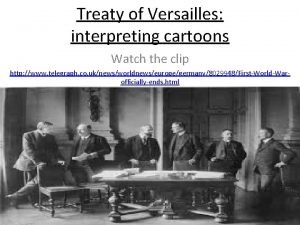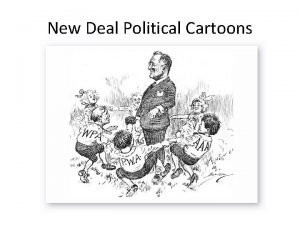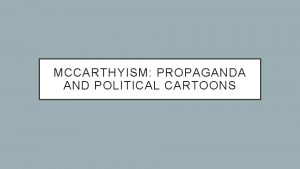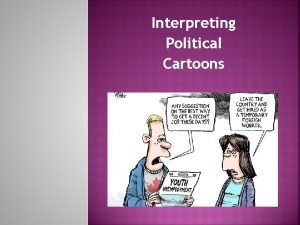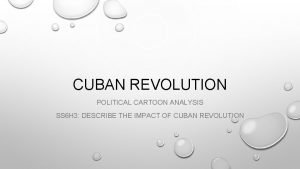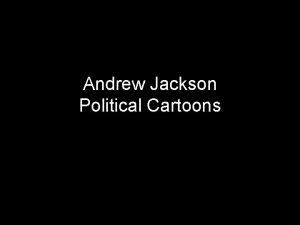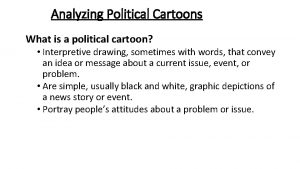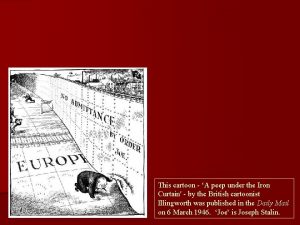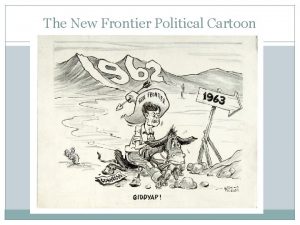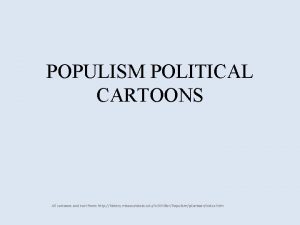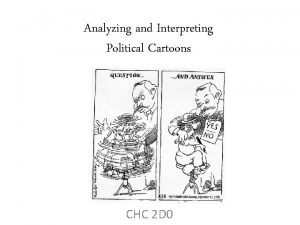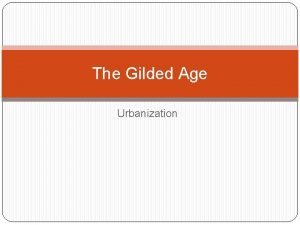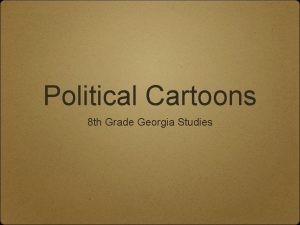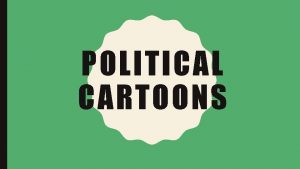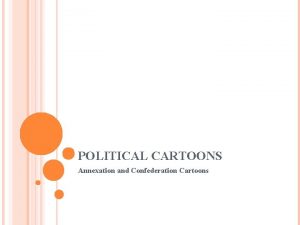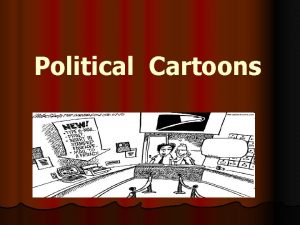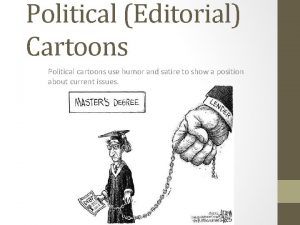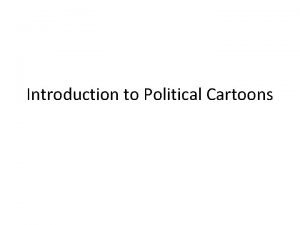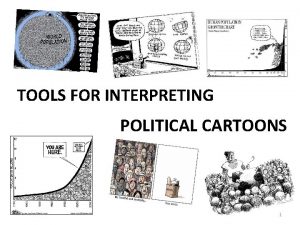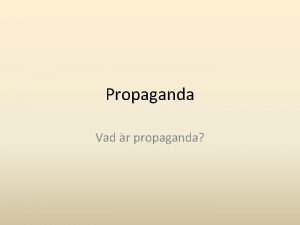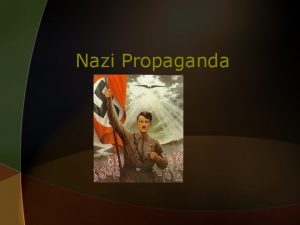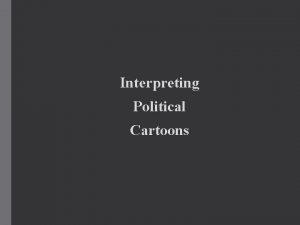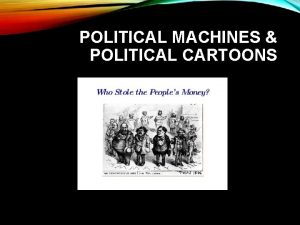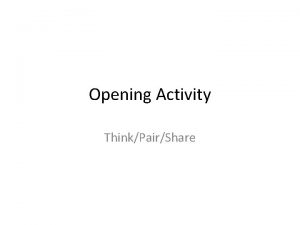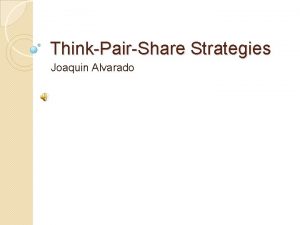Propaganda and Political Cartoons Propaganda Art ThinkPairShare How





















- Slides: 21

Propaganda and Political Cartoons Propaganda Art

Think-Pair-Share How can art be used to sway one’s opinions?

EOA and POD

Key Term Propagandainformation, especially of a biased or misleading nature, used to promote or publicize a particular political cause or point of view.

Propaganda Art Propaganda is commonly used by the media. The media uses propaganda to publicize a certain issue. The media can take two sides, a positive or negative side. For example, if the U. S. wants to go to war with the Germans, the media will make the U. S. soldiers look like heroes and the German soldiers look barbaric.

Political Cartoons When the media does this, it is often analyzed as a political cartoon. The artists displays their views through the use of images with words in the cartoon. The picture may have a caption or two to clarify what the author is trying to state. Artists who make these propaganda images often blow them out of proportion by favoring one side over the other.

Key Term Political Cartoonillustrations or comic strips containing a political or social message that usually relates to current events or personalities.

Political Cartoons Certain political cartoons are straight forward and direct. Political cartoons have been around for centuries. The most daring of people who spoke their mind without liberties or freedoms created political cartoons since the 1600's.

What are Propaganda techniques? § Propaganda is designed to persuade. § Its purpose is to influence your opinions, emotions, attitudes, or behavior. § It seeks to “guide your choice. ”

Who uses Propaganda? Military Media Advertisers Politicians

Propaganda Techniques Bandwagon Name-calling Testimonial Glittering Generality Plain-folks appeal Transfer Emotional words Faulty Reasoning Fear

Bandwagon § Everybody is doing this. § If you want to fit in, you need to “jump on the bandwagon” and do it too. § The implication is that you must JOIN in to FIT in.

Name Calling § A negative word or feeling is attached to an idea, product, or person. § If that word or feeling goes along with that person or idea, the implication is that we shouldn’t be interested in it.

Testimonial § A famous person endorses an idea, a product, a candidate. § If someone famous uses this product, believes this idea, or supports this candidate, so should we.

Glittering Generality • A commonly admired virtue is used to inspire positive feelings for a person, idea, or product. • Words like truth, democracy, beauty, timeless are examples of those general terms.

Plain-folks appeal This idea, product, or person is associated with normal, everyday people and activities.

Transfer Symbols, quotes, or images of famous people are used to convey a message. The message may not necessarily be associated with them.

Emotional Words that leave us with positive or negative feelings are used to describe a product, person, or idea. We associate those words and, therefore, those feelings with the product.

Faulty Reasoning Factual supporting details are used though they do not support the conclusion. It works like this: Christians believe in God. Muslims believe in God. Christians are Muslims.

Fear Our fears are displayed. Ideas, candidates, or products are shown to put our fears to rest.

Video: The Making Of an Editorial Cartoon
 Think pair share activity
Think pair share activity New deal political cartoons and explanations
New deal political cartoons and explanations Russian revolution political cartoons
Russian revolution political cartoons Peace and future cannon fodder cartoon analysis
Peace and future cannon fodder cartoon analysis Third estate political cartoon
Third estate political cartoon Stock market crash 1929 political cartoon
Stock market crash 1929 political cartoon New deal political cartoons
New deal political cartoons Red scare political cartoon
Red scare political cartoon Interpreting cartoons
Interpreting cartoons Cuban revolution cartoon
Cuban revolution cartoon Cartoon pictures of andrew jackson
Cartoon pictures of andrew jackson Horse cartoon images
Horse cartoon images Iron curtain cartoon analysis
Iron curtain cartoon analysis New frontier jfk definition
New frontier jfk definition Here lies prosperity cartoon
Here lies prosperity cartoon What is the message of this political cartoon
What is the message of this political cartoon American imperialism political cartoons explained
American imperialism political cartoons explained Political cartoons
Political cartoons Urbanization political cartoon
Urbanization political cartoon Political cartoons
Political cartoons Message behind
Message behind Globalization political cartoons
Globalization political cartoons



